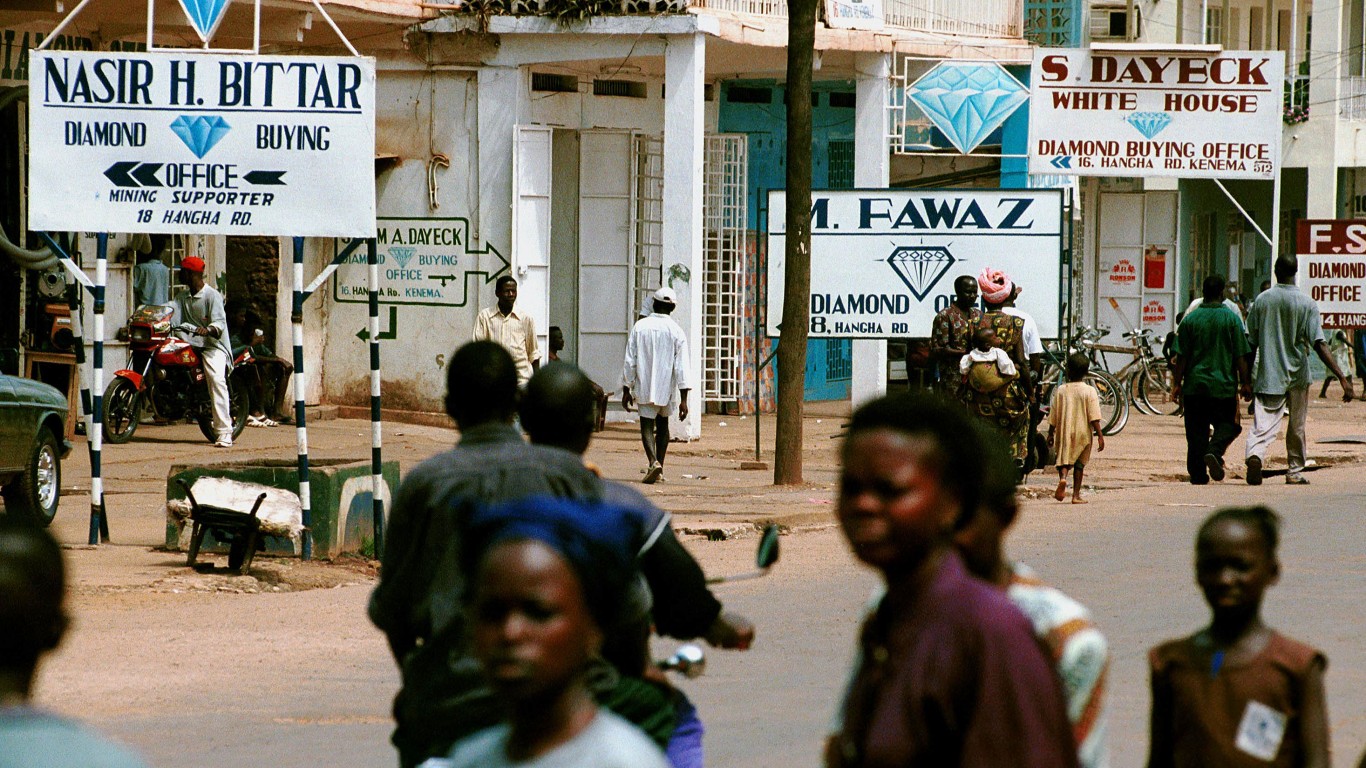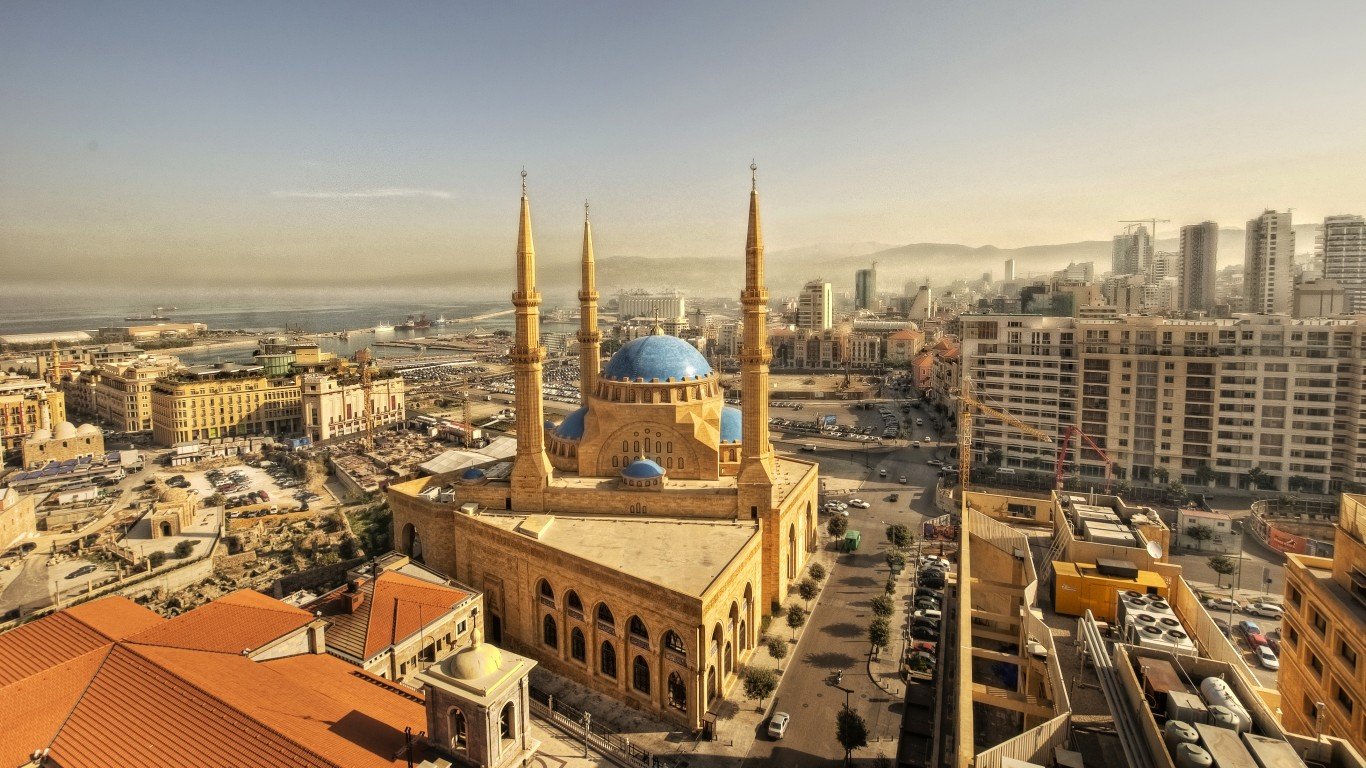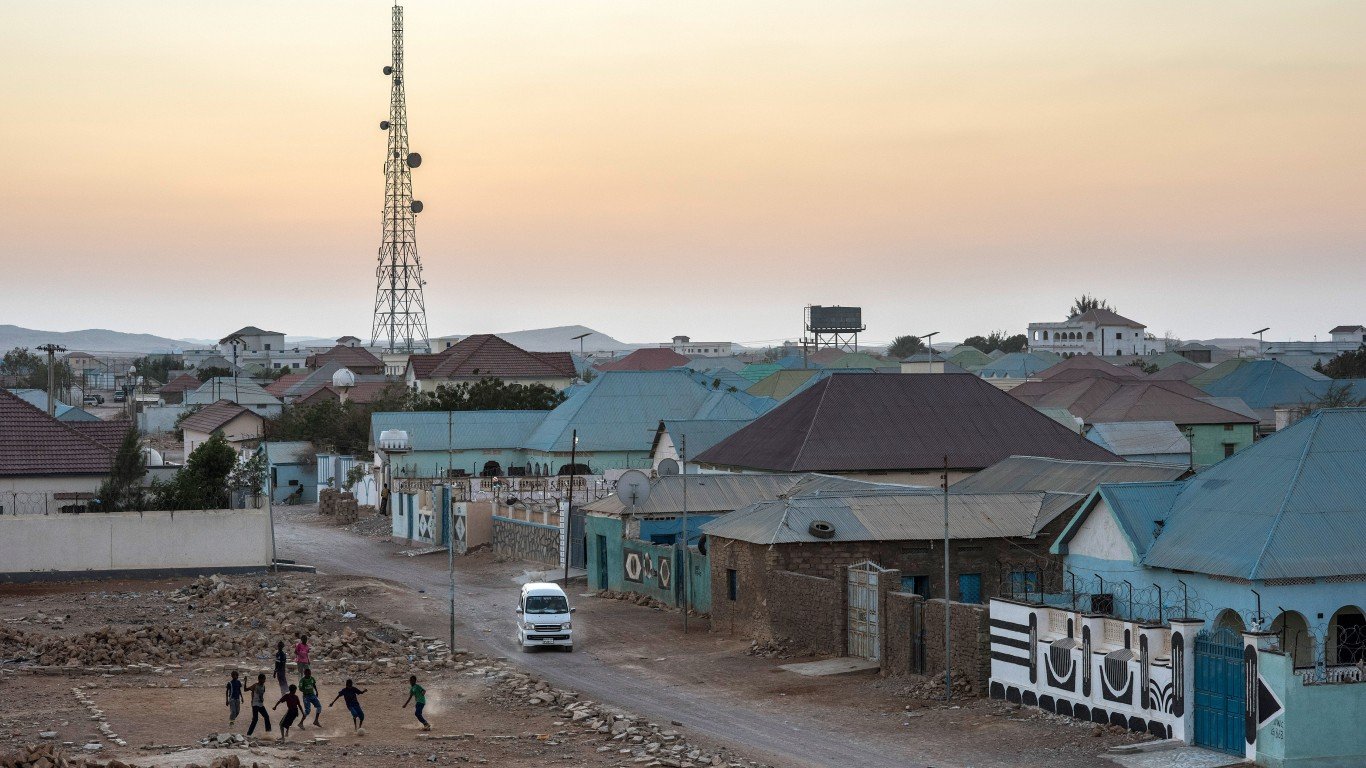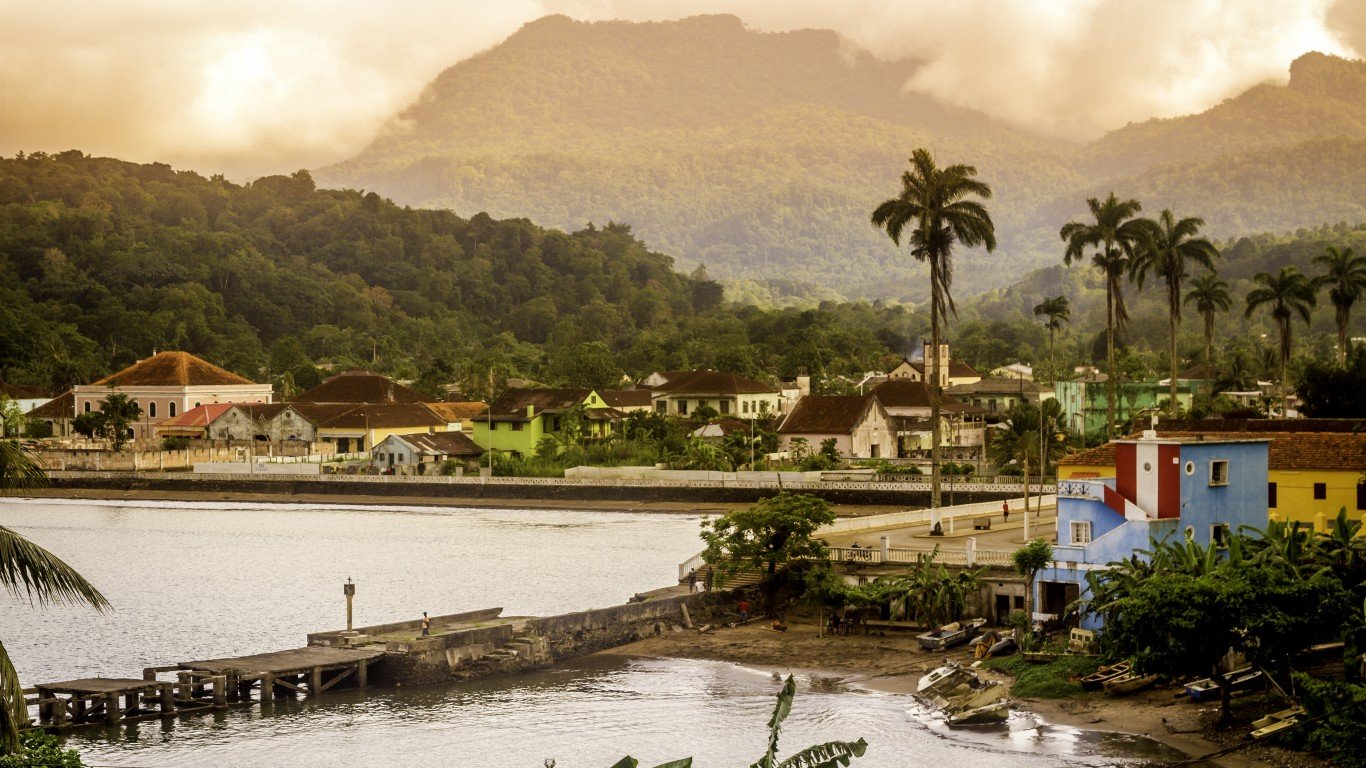
25. Sierra Leone
> Foreign direct investment as pct of GDP: 8.58%
> Foreign direct investment: $348.7 million — #87 lowest of 195
> GDP: $4,063.3 million — #38 lowest of 195
The west African country is rich in natural resources such as iron ore and bauxite and has attracted foreign investors such as American and Chinese companies. China is funding a hospital, a hydroelectric dam, and a rubber production project. Other foreign investors include Nigeria, Sweden, Mauritius, Belgium, and Germany.
With some exceptions, foreign companies may own or invest in Sierra Leonean entities. Sierra Leone presents a challenge to foreign investors because of inadequate infrastructure and corruption. U.S. foreign direct investment in Sierra Leone was $12 million in 2019, unchanged from the previous year.

24. Lebanon
> Foreign direct investment as pct of GDP: 9.01%
> Foreign direct investment: $2,860.8 million — #51 highest of 195
> GDP: $31,735.2 million — #98 lowest of 195
More than 70% of foreign investment was in the form of real estate acquisitions, based on estimates from various sources, including the Central Bank of Lebanon, the Financial Times and Moody’s. Syrians and Saudis were the top foreign investors in Lebanese real estate.
Europe accounted for 51% of foreign companies in Lebanon in 2018. France, the former colonial overseers of Lebanon, held the largest share, followed by Germany. European projects are focused on the agro-food, oil and gas, and trade sectors. There is growing concern about political instability in the country, sovereign debt issues, and the impact of the civil war in neighboring Syria.

23. Somalia
> Foreign direct investment as pct of GDP: 9.30%
> Foreign direct investment: $464.0 million — #95 lowest of 195
> GDP: $4,988.4 million — #42 lowest of 195
The east African nation of Somalia, devastated by years of civil unrest and turmoil, has put out the welcome mat for foreign investment. At the top of the nation’s list is improving its infrastructure. Turkey is among the foreign investors helping to rebuild the nation. Somalia developed a 10-year plan for building roads, bridges, airports, and ports in 2016.
The other sectors the nation is seeking to expand are livestock, farming, fisheries, energy, and banking. Turkey, Germany, and the U.S. are the main investors in Somalia through bilateral trade agreements.

22. Palau
> Foreign direct investment as pct of GDP: 9.31%
> Foreign direct investment: $24.0 million — #43 lowest of 195
> GDP: $257.7 million — #5 lowest of 195
The Palau government relies on financial assistance from the United States under the Compact of Free Association with the U.S., which went into effect after the Pacific island nation became independent in 1994. The U.S. provided Palau with about $700 million in aid in the first 15 years of the agreement in return for unrestricted access to its land and waterways for strategic purposes. The nation’s constitution forbids foreigners from acquiring title to land or water in Palau, but it allows them to lease.

21. São Tomé and Principe
> Foreign direct investment as pct of GDP: 9.96%
> Foreign direct investment: $47.1 million — #54 lowest of 195
> GDP: $472.9 million — #6 lowest of 195
São Tomé and Principe, located off the western equatorial coast of Central Africa, gained independence from Portugal in 1975 and retains strong economic ties with its former colonial master. In February 2022, Portuguese company Visabeira bought a 51% stake in the country’s telecom Companhia Santomense de Telecomunicações.
The African nation is seeking to modernize its port infrastructure, and in 2020, China announced it was funding airport rehabilitation in São Tomé and Príncipe. Foreign investment has been slow, however, because of the nation’s small domestic market, inadequate infrastructure, high credit costs, and an unreliable and expensive electrical grid.

 24/7 Tempo
24/7 Tempo




